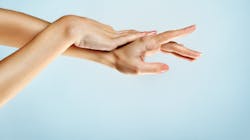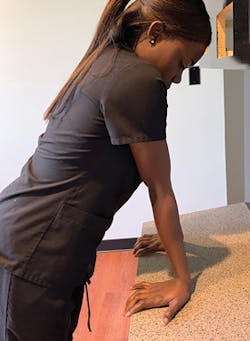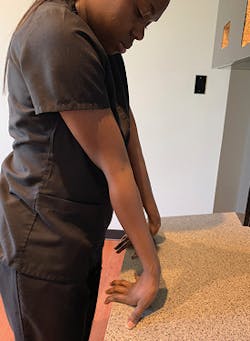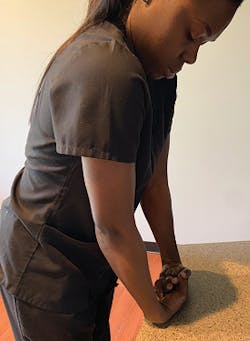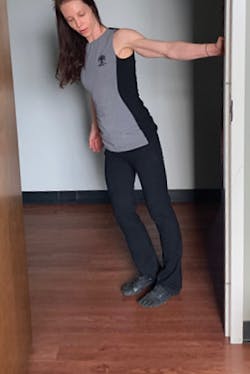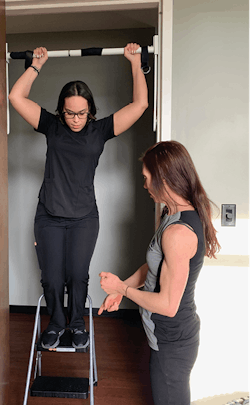New year, new professional fitness: In-shape hands for total body health
By Desirée Walker, DDS, FICD
This past week I treated myself to a manicure. It was just what these overworked dental hands needed...or was it? Sure, my hands looked better, but deep down my dental workhorses were not any healthier.
As a society, we value the appearance of our hands. In the US, we spend $8.5 billion on salon services, a majority of that going for manicures.1 Remarkably, nail polish tops the list of cosmetics, generating close to $600 million in revenue.1 But as dental professionals, we know that this kind of beauty is only skin deep. What really matters is how well our hands work, whether our hands are healthy, and whether we’re working pain free.
Daily wear and tear
Our profession is bombarded with hand injuries. These injuries run the entire spectrum from daily hand fatigue, to frequent hand cramping, to nerve entrapment that causes carpal tunnel syndrome. When our hands don’t work, we don’t work. Nor can we enjoy our lives outside of dentistry, be it with friends, with family, or through activities.
As I described in my first article in this series, our bodies break down due to our environment and how we move through it. In terms of hand health, ergonomic instruments are an important part of our environment. Research has shown that the key factors for hand health are as follows:
- instrument width (wider is better)
- weight (lighter is better)
- sharpness (sharper is better)2
These qualities help relax our grip, which reduces overuse and fatigue of the small muscles in our hands. Ergonomic instruments create a much safer environment for us.
But is there a way we can move to make our hands more fit? And is there a missing element in our hand health that is linked to total body wellness? Yes and yes!
The missing element is grip strength. Research has shown that a decrease in grip strength increases one’s risk of heart attack, stroke, and all-cause mortality.3 The findings suggest that stronger grips signal more muscle mass, which is developed with increased activity and better health.
Wow! It is incredible to think how much power our hands have on our fitness!
So how can we move to combat the risks to our hand health and overall health? I like to take a two-phase approach to hand fitness and grip training: mobility and strengthening. I have listed a few of my top exercise picks here that you can do at work and outside of work, such as at home or in the gym.
On a side note, the last exercise—the most challenging one—is my favorite not only for grip strength but for pain relief. It is the foundation for my fitness training, especially for the obstacles on American Ninja Warrior.
Give these exercises a go, use the progressions as needed, and have fun. Please don’t hesitate to contact me with any questions. Whether on a pull-up bar or on Instagram, I’ll be hanging out ready to help you achieve better fitness!
Hand stretches to do between patients
Below is a quick stretch routine—only three moves. It’s great to squeeze in between your scheduled patients.
Fingers back, palms down
2. Stretch straight backward.
3. Rock gently to the left and right.
4. Repeat 10 to 15 times.
Fingers back, palms lifted
This exercise provides a great focus on your knuckles and fingers.
2. Lift your palms. This will get you a bit more stretch through the fingers and the first knuckle.
3. Stretch straight backward.
4. Rock gently to the left and right.
5. Repeat 10 to 15 times.
Fists together, back of hands on desk
1. Make two fists. Place your thumbs on the outside of your fingers.
2. Bend your elbows and put your knuckles together. Fit your knuckles together like cogs in a wheel.
3. Bend your elbows slightly and place the back of your hands fully on a table.
4. While doing this, keep your fists together. (This will be challenging.) Keep your fists tightly closed. (This also will be tough.) Bend and flex your elbows.
5. Repeat 10 to 15 times.
If you have additional time, the first two stretches in this series can be done with your fingers forward and pointing away from you.
Hand exercises you can do around the operatory
All bets are on that you already have this excellent piece of grip strength equipment in your office—a rubber band! Go snag one from the front office and give this exercise a try. This is good to do during telephone calls or team meetings.
Rubber band finger extensions balance out your finger muscles and soft tissue from the curled and contracted positions we maintain when holding our instruments. This exercise will also get the blood moving into the small muscles of the hands and fingers.
Rubber band extensions
1. Place a rubber band around the ends of your fingers.
2. Spread and extend your hand and fingers as wide as possible.
3. Complete 15 to 30 repetitions throughout the day.
Tip: Use two rubber bands to add more resistance if you like.
Squeeze balls
Do these exercises between patients or during telephone calls and meetings. Any squeeze ball will do, but one I found particularly interesting and lots of fun is Squegg (mysquegg.com). Squegg is a squeeze ball with an app that measures your grip strength, tracks your progress, and even offers interactive grip games. Squeeze balls are pretty fun anyway, but this one is great to turn your grip work into play.
1. Pick up the squeeze ball in one hand. Squeeze, hold, and relax.
2. Do at least 15 to 30 repetitions throughout the day.
Exercises you can work in throughout the day
Farmer’s walk
1. Keeping your arms straight or slightly bent, carry a heavy load with your hands and walk. The load can be grocery bags, dumbbells, filled gallon jugs, etc. It doesn’t matter as long as it’s heavy enough to get the job done.
2. Form is important! Don’t let your shoulders droop forward. Stand tall with a “long” spine. Keep your core active—as if someone were going to punch you in the stomach.
3. Try for one repetition every day.
Hanging
Hanging from a bar challenges your grip muscles to support the entirety of your body weight as opposed to just a fraction. Furthermore, because of the demand on the arms, shoulders, back, and core, hanging from a bar unlocks far more than just grip strength. It’s a total body challenge. Because of the total body demand, it’s important to slowly work into this exercise by using partial body weight and progressions with door-frame leans as described below.
Hang progression No. 1: Door-frame leans
2. Grab the door frame at shoulder height. Lean your body away from the door. Getting your feet closer to the frame will increase the demand on your grip.
3. Hold for 10 seconds.
4. Repeat with the other arm.
Hang progression No. 2: Bar hangs
A home chin-up bar is one of the most useful pieces of equipment to have. I know the wonders it has done for me—not just in terms of grip strength, but for mobility, back alignment, and fitness. I have one installed in my office. My team loves it!
2. Use partial body weight with feet supported until you feel comfortable with full body weight.
3. Hold for 10 seconds and repeat three times.Editor’s note: This article is part three of a three-part series on fitness for dental hygienists.
References
1. Nail product sales in the United States in 2018, by segment (in million U.S. dollars). Statista website. https://www.statista.com/statistics/538249/us-nail-product-sales-by-segment/. Accessed March 2019.
2. Simmer-Beck M, Branson B. An evidence-based review of ergonomic features of dental hygiene instruments. Work. 2010;35(4):477-485.
3. Son DH, Yoo JW, Cho MR. Relationship between handgrip strength and pulmonary function in apparently healthy older women. J Am Geriatr Soc. 2018;66(7):1367-1371.
Desirée Walker, DDS, FICD, is a general dentist and owner of Lumber River Dental in Lumberton, North Carolina. She graduated from the University of North Carolina at Chapel Hill School of Dentistry in 2008. Outside of her practice and training for her next appearance on American Ninja Warrior, she does yoga and gymnastics outdoors with her two cats, Lu and Jones. She can be contacted at [email protected]. Follow her on Instagram at ninjadentist_desi.
